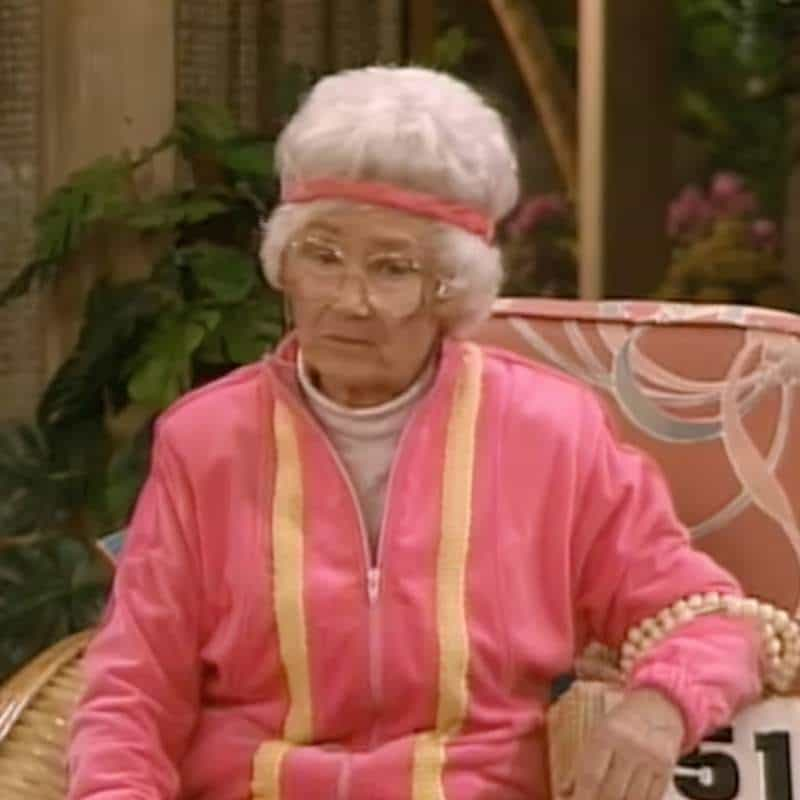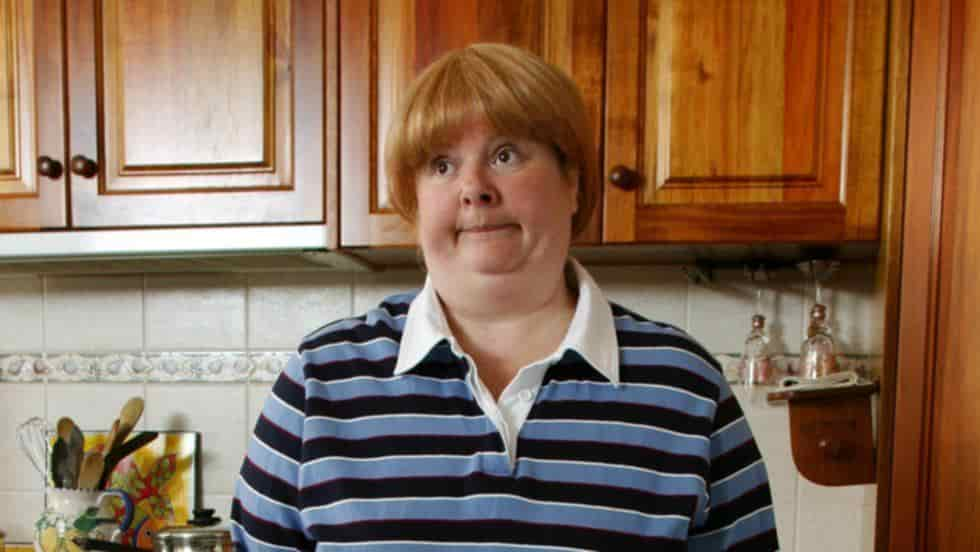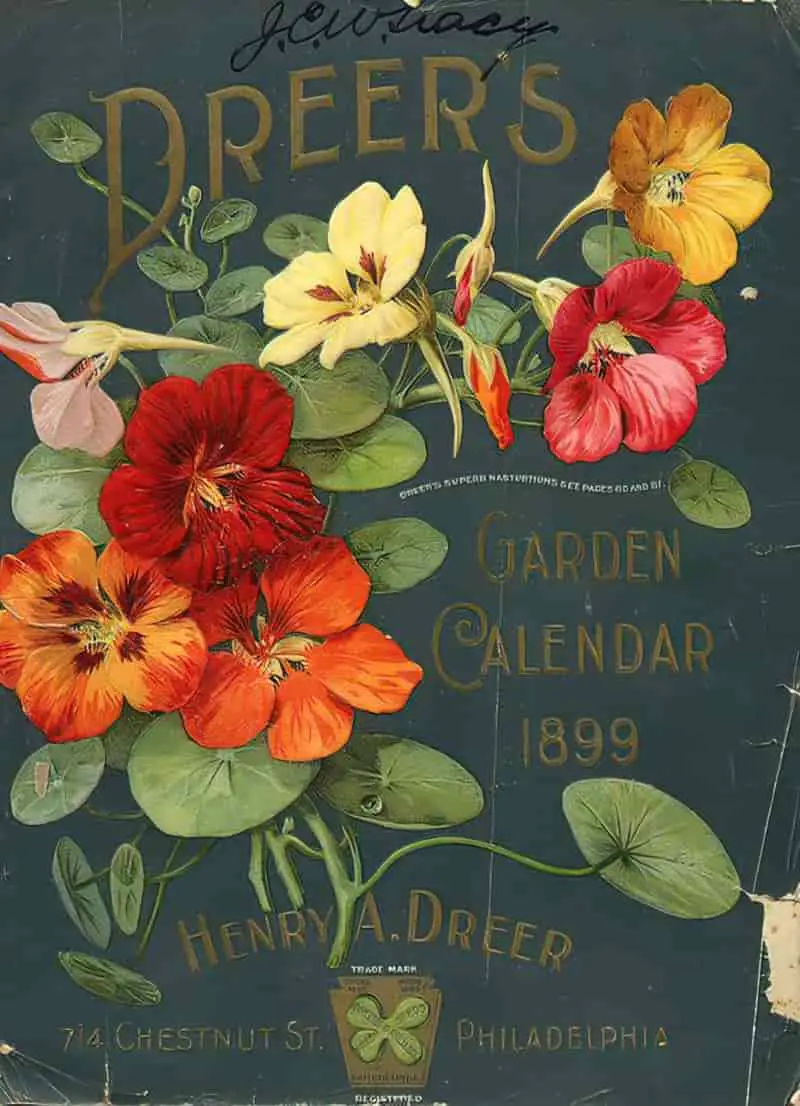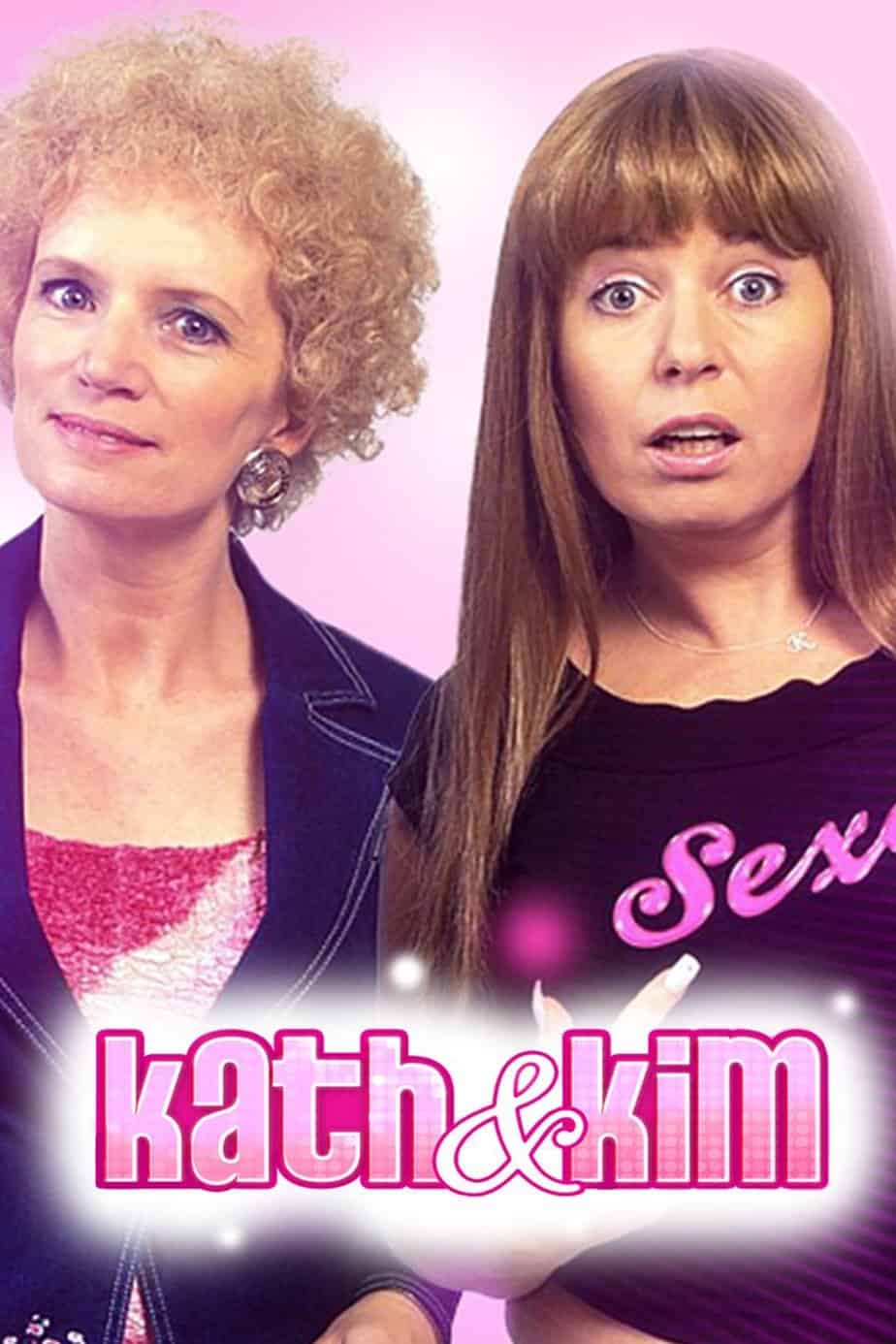Kath and Kim is a satirical Australian comedy series created by Jane Turner and Gina Riley, which aired 2002, 2003, 2004 and 2007. There are a couple of movies, too.
Kath and Kim was remade in America but failed to achieve popularity. Kath and Kim is a specifically (pacifically) Australian series, though enjoyed equally in New Zealand, and not just because Kiwis like to see Aussies making fun of themselves! (It’s because New Zealanders recognise the same characters.)
What can comedy writers learn from Kath and Kim? Below I take a look at the humour of Kath and Kim taking cues from the taxonomy of humour proposed by the creator of The Onion.

IRONY
Any difference between expectation and outcome
Satire is the comedy of beliefs, especially those on which an entire society is based. Satire and irony are not the same, but they commonly go together. (For more on satire, see my post on irony. For the difference between satire, farce and parody, Quora has a good answer on that.)
CHARACTER HUMOUR
Comedic character acting on personality traits
A lot of the humour of Kath and Kim comes from understanding who the characters are and laughing at them whenever they do something which is ‘just like them’. In order for this to work, the writers have to set up the characters and dynamics as quickly as possible. It starts with the intro — Kim ‘thinks she’s all that’, whereas her mother has her own sense of fashion and doesn’t realise when she’s looking ridiculous.

STRAIGHT GIRL, MADCAP GIRL
The dynamic between Kim and Sharon is seen in a lot of comedies. Here we have a stoopid/naïve character whose best friend is no less stupid but more of a schemer. We see this between Patrick (stoopid) and SpongeBob Squarepants (a schemer). We see these two tropes in Seinfeld, though the mutual friend is Jerry: Kramer is the naïve character and George is the schemer. In We Bare Bears Grizz is the schemer and Pan Pan is the naïve one.
The friendship between Kim and Sharon is perhaps a specifically female one. Though not at all a comedy, Helen Garner writes of the real life friendship between Anu Singh and Madhavi Rao in her true crime book Joe Cinque’s Consolation:
Perhaps they are most flagrant in adolescence: one girl is wild, bossy, selfish, flaring with hormones, crackling with sexual drive and careless of risk, but still dependent on the ballast provided by her companion, who is prim and cautious, not yet at the mercy of her body, one foot still planted in the self-containment of girlhood. They need each other. The well-meaning ‘supportive’ one trails along in the wake of her narcissistic friend, half aware that she is being used — as a cover against parental suspicions, a second fiddle, a handmaid, a foil. But she also feeds off the wrecker’s high-voltage energy.
The tendency to form such partnerships doesn’t end with youth. Every woman I have asked about this knew immediately what I meant and could provide examples. Many a woman has shifted, as different stages of her life brought forth different needs, the paring most poignantly when it inspires comedy: Dame Edna and her drab bridesmaid Madge; Kim and her browbeaten best friend Sharon Strezlecki in Kath and Kim. Even as we laugh, the spectacle disturbs us: we wait breathlessly for the worm to turn. And yet it is a relationship that benefits both partners. It would be hard to say, at its height, whose power is the greater.
Joe Cinque’s Consolation
Pauline Parker and Juliet Hulme were another real-life couple whose friendship was depicted as toxically imbalanced in Peter Jackson’s film Heavenly Creatures, though to what extent can one girl influence another? That’s the interesting question.
Orange Is The New Black arguably has a number of such partnerships. The most extreme and disturbing of those is between Crazy Eyes and Vee, because Vee knows exactly what the relationship is, and how she’s using another person for her own gain. The friendship between Alex Vause and Piper Chapman might be a better example, at least in the prequel years leading up to their time in prison.
Most television series with a wide cast of characters, and which also happen to pass the Bechdel Test, have at least one relationship that fits this description. In Mad Men there was Joan Holloway’s friend and room mate Carol.
In Six Feet Under it was Claire Fisher and Edie. It seems writers (and audiences) find such friendships especially interesting when one has lesbian interest in the other. But I haven’t seen exactly the same dynamics become so common in fictional male friendships, unless I’m missing something.
Mena Suvari was cast as a very similar sort of girl by Alan Ball in American Beauty, using Thora Birch’s character as her supporting role. Of course, the plot subverts audience expectations about how this friendship really works, therefore relying on the audience’s implicit understanding of how these friendships tend to work before the reveal is at all surprising.
In Freaks and Geeks, the relationship between Lindsay Weir and Kim Kelly is difficult to understand unless you understand this particular power dynamic. The writers did a bit of lampshading in order to explain the relationship, making Kim’s interest in Lindsay very obvious: Kim was trying to show her parents that she had turned a new leaf in order to keep her car. Befriending the study nerd was part of her plan.
In Gilmore girls we have Paris as a comically A-type personality who needs a cast of supporting characters in order for her to feel competitive and worthy. Paris only has ‘frenemies’. Though her relationship with Rory gradually becomes more like a friendship as the seasons progress.
STOOPID CHARACTERS AS ‘STOMACH’
Often correlating with stoopid characters — they tend to be the ‘stomach’ of the group. In his book Secrets of Story, Matt Bird writes about a common character ensemble in which characters will correlate with heart, head and stomach. This doesn’t just work for comedy, by the way. In other words, one will be the thinker, one will be the emotional character and the other will go with their gut. In comedy, the stomach is often quite literal — Kim ploughs headfirst into things and she is always eating.
I argue that of the characters in Kath and Kim, Kath is the head — it’s all relative — and Sharon is the heart, most likely to be sobbing at any point, or to feel lonely.
Kath Day-Knight is a more unusual comedic character (noice, yeah, different, yes it’s unusual…). She has similarities to the 1950s housewife we’ve seen before in American comedies, but the refreshing thing about this series is that she isn’t the ‘straight-man’ to her slob of a husband. Kel is the opposite of a slob. He is a fastidious butcher. (Though we might think of butchers as bloodthirsty, the reality is, attention to cleanliness comprises the main part of a butcher’s daily labour.)
I wonder if Turner and Riley despise the Married With Children and Everybody Loves Raymond marriages as much as I do, because they’ve gone out of their way to create in Kel Knight a man who is their opposite. In this marriage it’s Kath who is a slave to the gender binary. Unusually for comedy series she undergoes a character arc after learning about Kel’s bisexual years in the army, and even sets aside her spare room for his man bags.
REFERENCE HUMOUR
Common experiences that audiences can relate to
- Having an argument in your front suburban yard and nosy neighbours look at you
- Going to an expensive gift shop at the mall where you get the feeling the shop assistants are laughing at you as soon as you leave the shop
- Trying to park at the mall and having a concrete pillar ‘leap out at you’
- Getting a pet that turns out to be more work than you thought
- Getting an invitation to a baby shower from someone you don’t really like
- Having kids move back in the moment you repurpose their old bedroom
- Having kids come back home and raiding your fridge
- Wanting to look good at your school reunion to show what a success you turned out
- Feeling middle age and embarking upon a health and fitness regime
- Settling into the routine of a new relationship — who does what jobs around the house, and how
- Going on holidays with your in-laws and feeling like you don’t have enough time on your own
Brand Names
I wasn’t living in Australia when I first watched this series, but it’s refreshing to watch a locally produced show in which you recognise the brand names. This is a disadvantage we have when watching American or British humour — I suspect I’m missing the full extent of the humour because even if I recognise names, I don’t fully understand their cultural associations. (I’ve also been watching To The Manor Born lately, in which we have not only a cultural difference but an historic one.)
When Kim chastises Sharon for stealing her Petit Miams, I know exactly what those are. I know people in my own life who can’t leave them alone if they happen to be in the fridge. Kath and Kim elicits laughs by being super specific when referring to items. Kath is especially funny because she is still living in the 1970s.
SHOCK HUMOUR
Surprising jokes typically involving sex, drugs, gross-out humour and swearing
Kath and Kim is not a particularly shocking show, though if you watch it with your kids you’ll have a bit of explaining to do. Mostly they’re sex jokes.
A running gag is that Kim is grossed out by her mother’s references to sex with Kel, who she finds repulsive. Juxtaposed with that is the suggestion that Kim has terrible sex and doesn’t understand what good sex feels like.
In one episode Kath has lost her mojo. The therapist advises them to ditch the clothes. Kath and Kel take this literally. They arrive home from doing the groceries stark naked, and do the gardening naked too. Sharon and Brett decide it’s a great idea, and though we don’t see it, Sharon recounts a slapstick pin-the-tail-on-the-donkey episode in which she falls over naked and ruins a chance with her current crush.
PARODY HUMOUR
Mimic a character, trope, genre as closely as possible
Kim’s husband Brett has also been seen before in comedy, for instance in Keeping Up Appearances, but as the series wears on, it is clear that Brett is not really the victim he appears to be at first glance — he is masochistically turned on by a wife who seems to have memorised The Rules, which I’d almost forgotten about but remember that phenomenon? Sadly, the series is still going, with revisions ‘for the digital generation’. Authors Ellen Fein and Sherrie Schneider advocate that women ‘treat em mean to keep em keen’. First published in the year 2000, perhaps Western culture was feeling nervous about the turn of the millennium. Kim is a parody of that book and the culture that sprang up around it.
HYPERBOLE AS HUMOUR
Exaggeration to absurd extremes
Every episode takes ordinary situations to absurd extremes — you can rely on it.
Kath is a bored housewife so enrols in a floral design course. The drama around finding the right kind of flower is all out of proportion to the actual direness of the situation, but the episode ends with Kath using a whole pineapple as hat decoration instead of the flowers she originally wanted. The writers don’t stop there — she wins the TAFE competition. In the episode final conversation Kath and Kim have outside, Kath compares herself to Nicole Kidman by saying that she’s been snubbed. Others in her course complained that a pineapple is not a flower.
This joke was set up particularly well because as we see her using Kel as model for her ridiculous floral hats, she is unhappy with every creation she makes. “Oh, that’s not right,” she says, frustrated. Because we know that Kath has an ostentatious sense of fashion, and that even the final creation she comes up with will be gaudy and over-the-top, it is funny to see that even Kath has her own inner sense of style, and that she (and she alone) can tell the difference between one of her gaudy hats and one that is perfect.
WORDPLAY HUMOUR
Puns, rhymes, double entendres, etc.
Kath and Kim is big on word play and it works so well because you’ve probably heard people make exactly the same mistakes yourself. My great auntie says ‘prostrate cancer’ instead of ‘prostate’ and part of me thinks it’s because ‘prostate’ is too uncomfortable for her to say. That’s how it works on Kath and Kim.
- ‘Pacifically’ instead of ‘specifically’, except when they actually mean ‘Pacific’, in which case they’re going on a ‘Specific Cruise’. (The pattern is well-and-truly set up before the inversion gag is revealed.)
- A lot of the jokes are malapropisms, or phonological similarities “casting nasturtiums”, “I need breakfast, I’m ravishing.”

MADCAP
Crazy, wacky, silly, nonsensical
Some things are inherently weird-looking, and Kath and Kim make the most of the silliness of:
- Home-use exercise machines
- Power walking
- Disco dancing
- Irish dancing
- Inability to take steps while holding the ball in netball
Almost every episode features a ‘big struggle scene’ in which the characters look silly, but these characters look silly at every opportunity. Kath only smokes (in secret) while wearing a rubber glove. We all know women of about that age who don’t want to stain their fingers, which makes this a combination of madcap and character reference humour.
MISPLACED FOCUS
Attention is focused on the wrong thing
When Kath starts to worry about her ‘chooky neck’ after enduring insults from her teenage-like daughter, she doesn’t realise she’s starting to get upset and is walking like a chook.
In a later episode, Kim doesn’t realise that her hair extension is made of horse’s hair which makes her desirable to her mother’s irascible wedding horse.
REPETITION (RUNNING GAG)
Scott Dikkers of The Onion talks about ‘jokes about jokes’, but the equivalent of that in Kath and Kim is when the audience waits for something we know is coming, and are satisfied when it does. At one point in every episode Kath will tell two fighting factions to ‘Look at moi, look at moi’.
This form of ‘waiting for the snap’ is also used by Catherine Tate, for instance in her Nan skits, in which Nan always switches from nasty to nice or vice versa. The key in writing this kind of joke is giving the audience enough clues to know when it’s going to happen.
- In Southpark it’s ‘They killed Kenny, you bastards!”
- In Keeping Up Appearances someone will mispronounce Mrs Bucket’s name and Hyacinth will roll her eyes and says, “It’s BOUQUET!”

